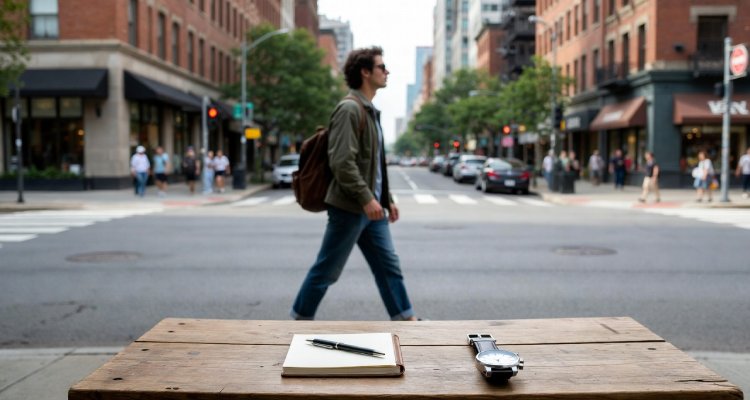The Friendship Recession: Why We’re Growing Closer Online and Farther Apart in Life
As digital connection surges, real-life friendships are fading. Explore the roots and consequences of the modern “friendship recession” in today’s hyperconnected world.
Introduction: When Likes Replace Hugs
On a recent Saturday night, Sarah, 32, found herself scrolling through Instagram stories alone in her apartment. Her feed buzzed with updates from college friends, former coworkers, and acquaintances she hadn’t spoken to in years. It looked like everyone was out living their best lives—but no one had called her. “I’m more ‘in touch’ than ever,” she says. “But I’ve never felt lonelier.”
Sarah is not alone. Across generations and geographies, a quiet epidemic is spreading—a friendship recession. In an age where we’re always online, many are feeling increasingly disconnected in real life.
Context & Background: A Social Shift in the Digital Era
Historically, friendship networks were rooted in proximity—school, workplaces, neighborhoods, churches. But over the past two decades, digital platforms have reshaped how we form and maintain relationships.
According to a 2021 American Perspectives Survey by the Survey Center on American Life, the number of Americans reporting “no close friends” has quadrupled since 1990. While social media and messaging apps promise instant connection, they may be displacing deeper, more meaningful interactions.
Add to this the societal changes brought by the COVID-19 pandemic—remote work, reduced public gatherings, and prolonged isolation—and it becomes clear: our digital closeness is coming at the cost of real-world intimacy.
Main Developments: Hyperconnectivity, Hollow Bonds
The paradox of the friendship recession lies in its invisibility. We’re texting more, commenting more, even video calling more. Yet studies show we’re seeing our friends less—and feeling more alone.
A 2023 Pew Research report found that 60% of young adults in the U.S. feel “emotionally distant” from their peers, despite being active online. Many cite the decline of spontaneous, in-person social interactions—coffee catchups, weekend hangouts, or even hallway chats at work—as a key reason.
At the same time, algorithms encourage shallow engagement: reacting to posts, watching stories, or sending memes—often without real conversation. Relationships, once sustained by time and shared experience, are being diluted into fragmented online touchpoints.
Expert Insight & Public Reaction: Social Capital in Decline
“Digital tools are great at maintaining existing friendships, but they’re terrible at helping us forge new ones,” says Dr. Marisa Franco, psychologist and author of Platonic: How the Science of Attachment Can Help You Make—and Keep—Friends. “We’re outsourcing emotional labor to technology, and the results are emotionally undernourishing.”
Neuroscientists echo these concerns. Oxytocin, the hormone linked to bonding, is released primarily through in-person interaction—eye contact, touch, shared experiences. Without these, our brains perceive social interaction as superficial.
Meanwhile, on platforms like Reddit and X (formerly Twitter), users regularly post about struggling to make or maintain adult friendships. Many describe being “ghosted” after one or two in-person meetups, or feeling that social media feeds are poor substitutes for real companionship.
Impact & Implications: Who’s Affected—and What’s at Stake
Young adults, men, and remote workers appear to be among the hardest hit. A 2022 Survey Center report revealed that while women tend to maintain broader emotional support networks, men often rely on just one or two close friends—and are now reporting historic lows in friendship satisfaction.
Workplace shifts also play a role. As hybrid and remote work become the norm, opportunities for organic friendship-building among colleagues are shrinking. Fewer watercooler moments mean fewer bonds forged.
But the implications stretch beyond personal well-being. Friendship is closely tied to mental and physical health, civic engagement, and even life expectancy. A lack of strong social connections has been linked to higher risks of depression, anxiety, substance abuse, and chronic disease. In the long run, the friendship recession may undermine not just individual lives, but societal resilience.
Reimagining Connection: Can the Tide Be Reversed?
Despite the bleak data, some efforts are underway to rekindle real-world connections. “Friendship clubs” and adult meetup groups are gaining popularity. Apps like Bumble For Friends and Meetup are trying to repurpose dating-style technology for platonic relationships.
Cities like New York and San Francisco are experimenting with “third spaces”—community hubs not centered around consumption—to encourage casual mingling. Universities are revisiting orientation programs to foster deeper bonds among students.
Experts suggest practical steps too: scheduling regular friend dates, initiating phone calls instead of texts, and being intentional about in-person time. As Dr. Franco puts it, “Friendship doesn’t just happen—it must be cultivated, especially now.”
Conclusion: Rediscovering Friendship in a Digital Age
The friendship recession isn’t a failure of individuals—it’s a reflection of a society grappling with rapid digital change, social fragmentation, and lifestyle shifts. While technology has given us unprecedented ways to stay in touch, it cannot replace the simple, sacred act of being together.
In the end, friendship remains one of our most powerful tools for healing, belonging, and joy. But in a world of endless scrolling and short-form conversations, it takes courage—and effort—to choose connection over convenience.
Disclaimer: This article is for informational purposes only and does not constitute medical or psychological advice. If you’re experiencing prolonged feelings of loneliness or depression, please seek support from a mental health professional.











